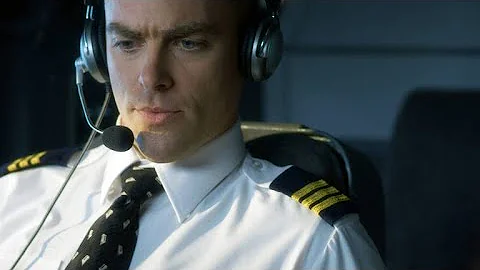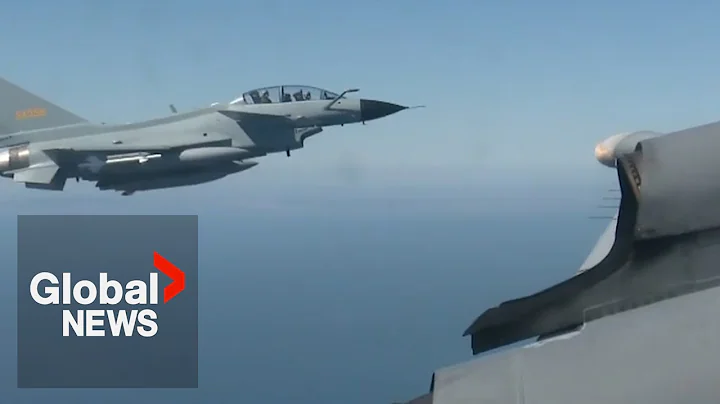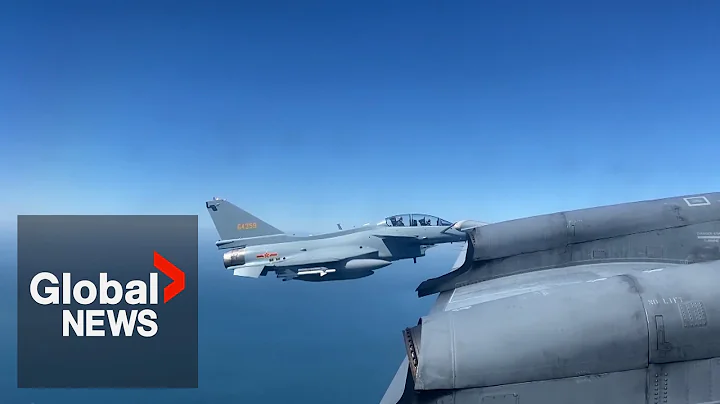A civil aviation airliner is often equipped with two engines. If one engine suddenly fails at an altitude of 10,000 meters, can it still fly smoothly with one engine? Can it land safely?

Aviation engine
The so-called aviation engine refers to the engine equipment mainly used to generate pulling force or thrust to cause the aircraft to move forward. It can be said to be the heart of the aircraft. It not only generates power for the flight of the aircraft, but also provides power for the electrical equipment on the aircraft. For example, the air conditioner and lighting equipment on the aircraft require the engine to provide power.

Generally speaking, civil aviation short-distance aircraft adopt a dual-engine structure, such as Boeing B737 and B777, which are dual-engine. Long-haul aircraft are generally equipped with four engines, such as Airbus A340 and A380. Generally, the most common aircraft engine is suspended in the pod on the pylon under the wing, which is convenient for maintenance and replacement.

At the same time, the data monitoring used on the engine can collect the operation status and overall working status of the major components of the engine through specific sensors. It is then uploaded via radio to a satellite or nearby ground air station for monitoring. Once there is an abnormality in the data, the airport will immediately notify the flight crew and take countermeasures, or even make an emergency landing nearby. To prevent the aircraft engine from suddenly failing in the air, resulting in the risk of the aircraft crashing.

The right engine fell off, and four hundred passengers were shocked at high altitude
In fact, although the engine performance testing of the aircraft is very strict, there are still cases where the engine suddenly fails in the air.
On October 15, 2015, Iran's capital Tehran's Mehrabad Airport, a Boeing 747 flight of Iran's Mahan Airlines took off smoothly early that morning.

However, shortly after takeoff, a loud noise frightened the 426 passengers who were still resting in the cabin. What happened? The plane was struck by lightning? There was no thunder or rain on this sunny day! The crew also quickly checked the equipment and found that the aircraft's No. 3 engine was scrapped in the air and large parts fell to the open ground. Fortunately, no one on the ground was injured.

However, the fallen parts pierced the engine pylon and hit the fuselage. Then the entire engine separated from the fuselage and completely fell to the ground. For example, this Boeing 747 has four engines. It doesn’t matter if one of them breaks down, but there are still three that can be used!
You would be wrong to think so. If an engine fails during flight, the aircraft will no longer be able to operate normally. Then the thrust on the wings on both sides of the aircraft will be seriously unbalanced, and the lift generated by the wings will also be inconsistent. The aircraft will deflect towards the side where the engine fails, and in severe cases, it may even tilt and roll over.

At this time, the crew who encountered the emergency also realized that the situation was not good. They immediately reported to tower and requested to return immediately. The captain quickly made adjustments after learning the news. He first alleviated the lift imbalance problem by changing the flight angle of the aircraft, and then adjusted the rudder of the vertical tail to correct the yaw. The co-pilot increased the engine speed and thrust that were originally working normally, hoping to maintain the aircraft's original flight altitude. Then gradually lower the altitude while maintaining sufficient continuous thrust from the engine.

However, this move increased the extra fuel consumption of the aircraft. If this happens when the aircraft flies to the highest altitude, it is really hard to say whether there will be an air crash.
Fortunately, the plane was not far from the airport at the time. With the crew's excellent control skills and fearless mentality in the face of danger, the plane finally landed at Tehran Airport. When more than 400 passengers were in shock, Mahan Air arranged another plane to escort these passengers to Bandar Abbas Port in southern Iran.
single-engine flight and ETOPS certification
Generally speaking, most commercial airliners using more than two engines, if one of them fails, can continue flying to a nearby airport and make an emergency landing using the other engine alone.This is mainly due to a special certification designated by the international civil aviation regulatory agency: ETOPS.

ETOPS, called dual-engine delayed flight in Chinese. This certification has two requirements for the safety of aircraft driving. The first is the requirement for the route. When planning a flight route for a twin-engine aircraft, the flight distance from any point on the route to an available alternate airport cannot exceed at least 60 minutes. This is mainly to ensure that the aircraft can make an emergency landing in time when the flight engine fails. After all, staying in the air for one more minute means more danger.

The second is to test the performance of the aircraft engine. During the test, the aircraft must turn off one engine and fly only on the other engine. After carefully examining the data generated during the flight of the aircraft, the inspectors will grade the performance of the engine. If it is determined that the aircraft can fly for three hours under full load on a single engine, it will be considered qualified.

The current mainstream dual engines All passenger aircraft have obtained 180-minute ETOPS operation permission. Among them, the Airbus A350XWB aircraft with the strongest ETOPS capability has obtained ETOPS certification of up to 370 minutes approved by the European and Chinese Aviation Safety Agency (EASA). This means that A350 can continue to fly for 370 minutes when a single engine fails. If converted into distance, it is up to 4360 kilometers, which is almost equivalent to crossing the Atlantic Ocean. Therefore, for ordinary passenger planes, even if one engine stalls in the air, it is basically guaranteed to reach the nearest airport and make a safe landing.

Should we install more engines?
Some people have said that since the engines of this aircraft often break down, wouldn’t it be good if we had more engines? It would be a huge mistake to think so.
Don’t think that the more engines an airplane has, the better. More engines can indeed bring more power to the aircraft, but they also increase the weight of the aircraft and increase the risk of inhaling foreign matter when the engine is started, causing unnecessary flight risks.

Once the engine fails, the aircraft becomes more difficult to operate due to the greater yaw moment. At the same time, aircraft engines require extremely high manufacturing techniques, and are currently basically monopolized by large international companies such as Pratt & Whitney, General Electric, and MTU Aero Engines. Blindly adding aircraft engines will only invisibly increase flight costs.
Several engines all failed, and the gliding force landing was a great story.
I just talked about the situation of single-engine flight, but what should I do if all the engines of the plane fail? The most famous accident here is the US Airways Flight 1549 accident on January 15, 2009.
That afternoon, an Airbus A320-214 flight took off from LaGuardia Airport in New York City. As a result, just one minute after takeoff and climbing, the control tower received a report from the captain: The two engines on the plane were It was hit by a flying bird and lost all power, requiring an immediate return to the airport. The control tower immediately gave the order: turn back immediately.

However, during the turnaround process, the captain found that the distance was too far to turn around and return to LaGuardia Airport, so he decided to fly the passenger plane to Teterboro Airport in New Jersey. Not long after the flight, the plane lost engine power and the altitude dropped sharply. It was estimated that the plane would crash and everyone would be killed before it reached the airport. The captain made a quick decision and decided to avoid densely populated areas and took the risk of making an emergency landing on the Hudson River that runs through New York City.

It's easier said than done. Since the plane lost the power provided by the engine, it could only fly into the Hudson River by gliding. The captain held the control stick and raised the nose of the aircraft so that the tail of the aircraft touched the water first, and then taxied to slow down with the belly of the aircraft touching the water. The engine on the left side of the plane also fell off and fell to the bottom of the river during taxiing because it could not withstand such a large impact. However, the plane finally stopped taxiing near Manhattan , and the fuselage remained generally intact. All 155 people on board survived. The event is also known as the "Miracle on the Hudson."

And this heroic captain also became the prototype of the 2016 movie "Captain Sally".In fact, the captain's real name is Salenberger. He joined US Airways as early as 1980 and once flew F-4 fighter jets in the U.S. Air Force. His flying ability is naturally impeccable.
He has also participated in many studies for the National Transportation Safety Board to assist in investigating air crash accidents, and teaches at the University of California, Berkeley, specializing in disaster crisis management. When the plane was in trouble, he not only remained calm and made an emergency landing on the river with superb skills, but also checked the cabin twice during the evacuation of passengers to ensure that no passengers were trapped before leaving the cabin last. It is precisely because of this that what could have been a tragedy that could have destroyed the machine and killed people has turned into a good story that everyone is full of praise for.

Civil aviation passenger planes are still the safest means of transportation
Although there are so many cases of passenger plane engine failure mentioned above. But in fact, the probability of such an accident actually happening is already very slim. According to airline statistics, the probability of engine failure is only 0.02 per 1,000 hours of flight time. That is to say, for every 100,000 flying hours, there are only two aircraft engine failure accidents, and these failures can ensure the safety of passengers through single-engine flight. It can be said that air accidents caused by engines are even rarer.

Take our country’s pilots as an example. Those who fly in the sky every day only fly 1,000 hours at most every year. One hundred thousand hours is probably not enough to be flown in a lifetime, and this is still a pilot. Ordinary civilian airliner passengers don’t have to worry, as they may not encounter an aircraft engine failure accident in their lifetime. Of course, with the advancement of technology, the safety of civil aviation aircraft will continue to improve. In the future, every passenger will be able to enjoy comfortable, convenient and convenient services, allowing more people to fly freely in the blue sky.





















